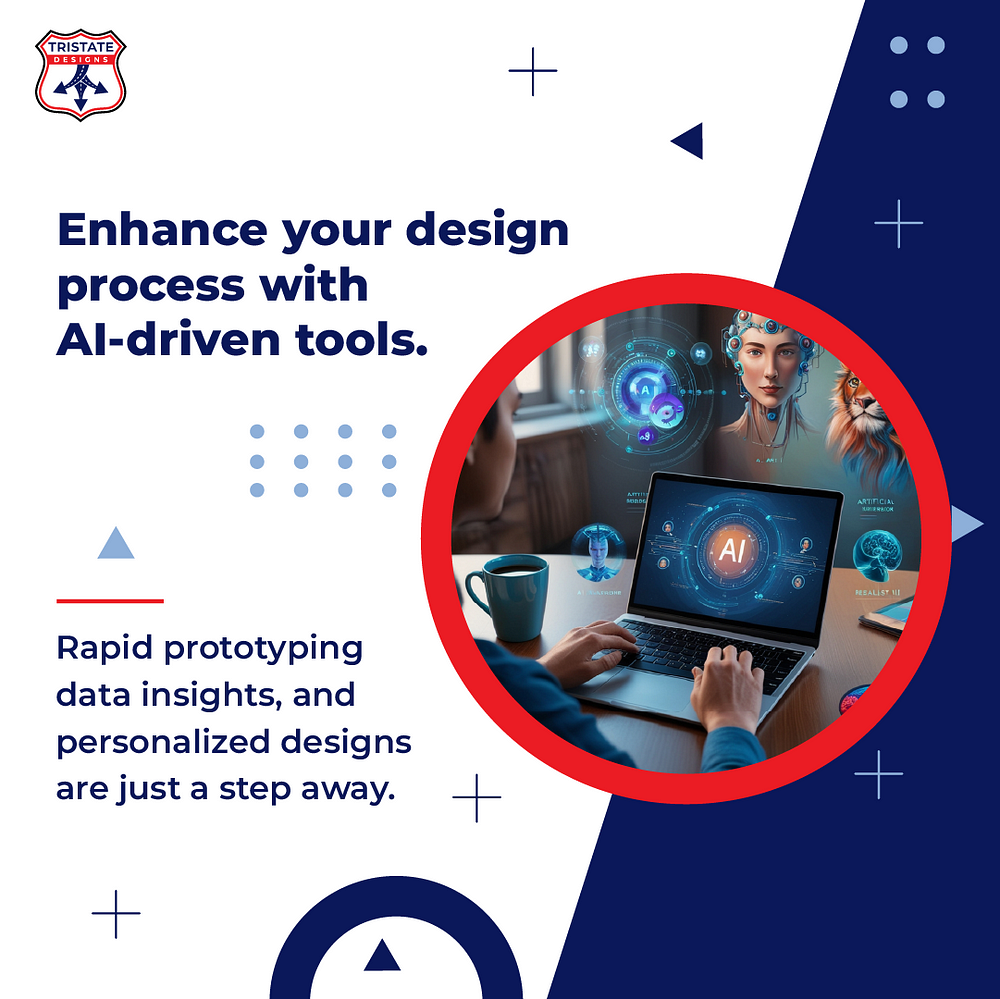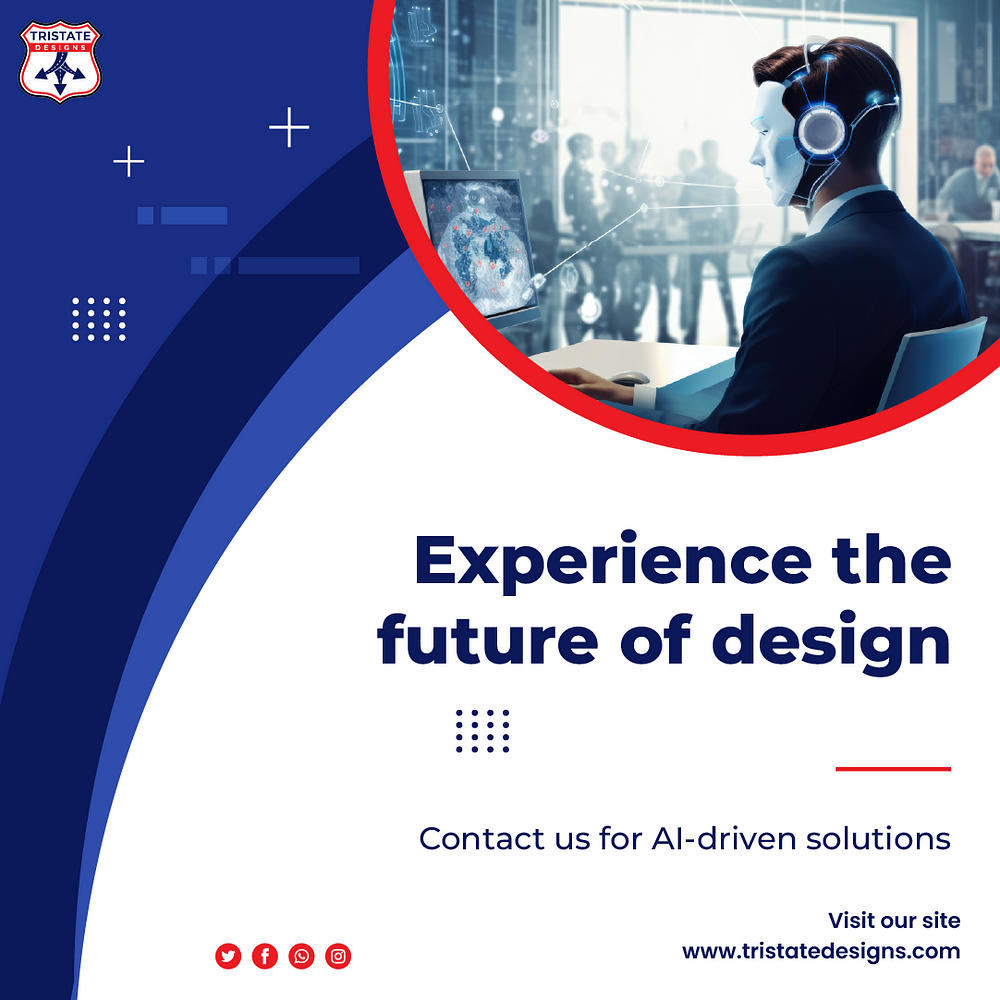In today’s digital age, design has evolved far beyond mere aesthetics. The future is driven by...
Enhance Your Design Process with AI-Driven Tools

The world of design is evolving rapidly, and AI (Artificial Intelligence) is playing an instrumental role in this transformation. Designers are now leveraging AI-driven tools to create more dynamic, efficient, and innovative designs. The question arises: how can AI tools enhance your design process, and what value do they offer? This article explores the integration of AI in design and how it boosts productivity while retaining creativity.
1. AI-Driven Design Tools: The New Frontier
Artificial Intelligence, once perceived as futuristic, is now a reality in design. Tools like Adobe Sensei, Canva’s Magic Resize, and Figma’s Smart Layout allow designers to automate repetitive tasks, freeing up more time for creativity. These AI-powered solutions are transforming how designers approach their projects, enabling them to craft more sophisticated and personalized designs quickly.
In design, time is often a critical factor. Rapid prototyping is an essential step in refining ideas. AI-driven design tools streamline this process, allowing designers to produce initial drafts, gather insights from real-time data, and modify designs swiftly. Whether it’s adjusting layouts, scaling images, or generating personalized logos, AI can deliver results in a fraction of the time it would take manually.
2. How AI Enhances Design Efficiency
The benefits of incorporating AI into the design workflow are numerous. AI tools focus on automating monotonous tasks, giving designers the freedom to concentrate on more strategic and creative aspects. Here’s how AI improves efficiency:
- Customization: AI algorithms can analyze user behavior and preferences to generate tailored design solutions. For example, if a user consistently prefers a specific color scheme, AI tools will recommend designs that incorporate those hues.
- Personalized Insights: AI leverages data to provide insights into user preferences. Designers can use this information to refine their projects, ensuring that the final product resonates with the target audience.
- Automated Adjustments: Features like resizing, cropping, and alignment can be handled automatically by AI tools, allowing designers to focus on more complex aspects of the design.
For instance, Canva’s AI-based tools allow designers to create cohesive designs across multiple platforms. Whether you’re working on social media posts, presentations, or print material, AI-driven adjustments ensure that each design looks flawless without requiring hours of manual tweaking.
3. AI’s Impact on Creative Decision-Making
There’s often a misconception that AI will replace creativity, but this couldn’t be further from the truth. AI tools don’t limit creativity; instead, they augment it by providing new possibilities that a designer might not have considered. With AI-driven suggestions, designers can explore a broader spectrum of creative directions and get instant feedback on how these choices will perform in real-world settings.
Designers can focus on the “big picture” while relying on AI to handle the technicalities. For example, Figma’s AI-powered features allow for automatic layout generation, reducing the need for time-consuming manual adjustments. This ensures that designers can spend more time on the overall aesthetic and user experience, rather than pixel-perfect tweaks.
4. AI as a Collaborative Tool
AI is also a collaborative force. Many AI-powered design platforms enable teams to work together seamlessly, providing shared insights and real-time updates. This helps in avoiding bottlenecks and ensures faster project delivery. In addition, AI tools are continuously learning from their inputs, improving their suggestions and adjustments over time.
In corporate settings, where large teams are working on brand guidelines or product designs, AI allows for consistency and cohesiveness across all channels. AI’s ability to maintain uniformity across platforms and devices ensures a smoother, more unified customer experience.
5. The Future of AI in Design
As AI technology continues to evolve, the possibilities for its application in design are limitless. We’re already witnessing AI’s influence in areas like logo generation, user interface design, and even animation. The future holds even more promise with potential advancements in 3D design, augmented reality (AR), and virtual reality (VR) development.
Moreover, the continuous improvements in machine learning algorithms mean that AI will only become better at understanding user intent, delivering more precise and customized suggestions.
Conclusion: Embrace the Future of Design with AI
AI-driven tools represent the next step in the evolution of design. They save time, enhance creativity, and provide valuable insights based on real-time data. Designers can now produce personalized, data-backed designs with ease, making AI an indispensable asset in modern design processes.
By embracing these AI tools, designers can not only enhance their workflow but also unlock a new level of creativity and efficiency. Whether you’re working on rapid prototyping or refining a design, AI-driven tools will ensure you stay ahead in this competitive field. The key is to balance the technical strengths of AI with the human touch of creativity, resulting in designs that not only perform but also inspire.


